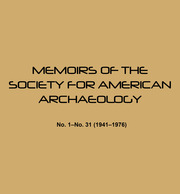Article contents
Population Growth and Settlement Pattern in Franklin and Hampshire Counties, Massachusetts, 1650-1850
Published online by Cambridge University Press: 27 June 2018
Extract
Locational Analysis has been a fundamental part of research in plant ecology and cultural geography for many years (for reviews see Greig-Smith 1964; Haggett 1966; Harvey 1967; King 1969; Morrill 1970). Recently there has been a growing interest in applying locational analysis in anthropological studies (for example, Plog 1968; Zubrow 1970; Wood 1971; Johnson 1972; Marcus 1973; Whallon 1973a, 1973b; Waddell 1972). The spatial organization of settlements and smaller units of human activity is relevant to an understanding of population structure. The distribution of human activity areas is presumably the result of complex interrelationships between social, biological, and ecological variables, and therefore should provide significant information regarding the effects of these variables in given situations. This paper will compare the historic pattern of community growth in Hampshire and Franklin Counties, Massachusetts, with that predicted by Hudson's (1969) model of rural settlement location.
The topography of the study area (Fig. 1) is dominated by the presence of the Connecticut River Valley and its tributaries. This region was first settled by Europeans in the 1650s and was primarily agricultural until recent times. The area has been characterized by rapid population growth over much of its history, and the population has tended to be distributed in the form of towns and small villages. The time period considered in the present study will be 1650-1850 which represents the time of maximum dispersal of settlements, prior to the advent of the automobile and most railroad traffic.
- Type
- Research Article
- Information
- Copyright
- Copyright © Society for American Archaeology 1975
References
- 2
- Cited by


